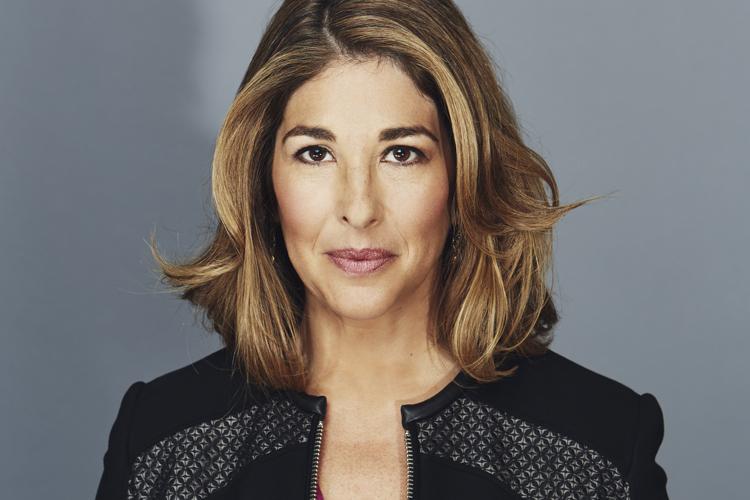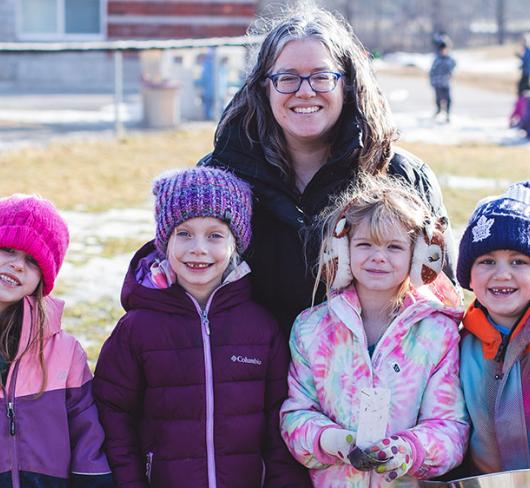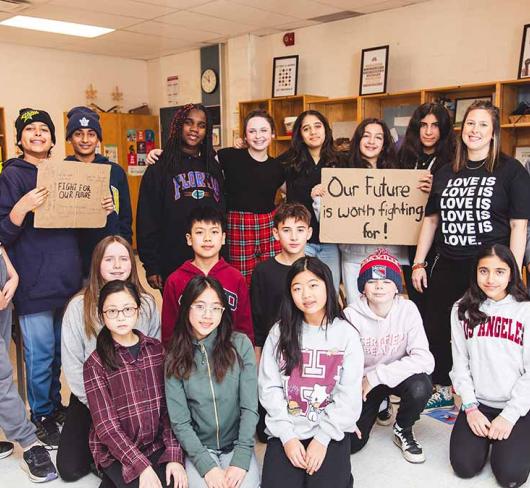
Facing Climate Crisis: An Interview with Naomi Klein
Izida Zorde: This Changes Everything has made a big impact on the climate justice movement. Can you tell me what the book is about and what the impetus for writing it was?
Naomi Klein: The book is about climate change, more specifically how our response to the crisis of climate change, on the deadline we are on if we’re to avert catastrophic warming, can be a catalyst to transform our economies and societies in ways that will make people’s lives better. I was trying to reframe the issue. Very often it is seen as all about sacrifice; if we respond to climate change, we will lose things. The oil industry has been very good at scaring people into believing it is responsible for all that is good and comfortable in people’s lives and, without fossil fuels, we’d all be suffering and shivering in the dark. The argument I make in This Changes Everything is that we have an economic system that is failing the vast majority of people on the planet. We’re seeing untenable levels of economic inequality, racial injustice, gender injustice. People are suffering because of their isolation from one another and from their communities. Given that climate change demands radical change from us, why don’t we seize this opportunity to address multiple crises at once.
IZ: Activists and scientists were scrambling to record American environmental data before President Donald Trump took office and many have raised concerns about tighter control around environmental and other information. What does this mean for getting facts about climate change out to the public?
NK: For Canadians, a lot of this is familiar and went on under Stephen Harper when scientists who received any kind of government funding were under tight controls. As a journalist writing This Changes Everything, it was incredible how difficult it was to get Canadian scientists on the record talking not only about a controversial subject like the impact of tar sands mining on water in Northern Alberta, but also less controversial issues like what’s happening with polar bears in Manitoba. I couldn’t get scientists to talk to me. Or somebody would agree to talk and then say that they couldn’t be quoted. What is happening in the United States is not unfamiliar territory, but it is frightening when a government sees facts as their enemy, and bullies and attacks the media. The Trump administration knows facts are not its friend and there are people in the administration who are expert information manipulators – Steve Bannon from Breitbart is his chief strategist, Roger Ailes, formerly of Fox News, a major advisor, and, if Trump himself is good at anything, it’s media spectacle. These men want to control the narrative and know that the facts can get in the way.
IZ: I read an article recently where you refer to the shock doctrine and say that recent announcements by the Trump administration are a series of shocks that will bring with them broad institutional and systemic change. Can you talk about that?
NK: When I wrote The Shock Doctrine, I spent a lot of time researching a strategy called “Shock Therapy,” a term used by economists to describe a way of changing a society very quickly. It came into popular use when the Soviet Union collapsed and American economists and advisors went into the former Soviet states and changed them from communist to capitalist very quickly. The idea was to change so many things at once that people would be confused and their resistance broken. In my research, I found that shock therapy was being used in the early 1970s in Chile when Milton Friedman was advising Augusto Pinochet. The idea is to go fast and hard and do everything at once.
This is what we’re seeing in the early days of the Trump administration. People are feeling totally overwhelmed and scrambling to keep up. What worries me most about this administration is what will happen when it has an actual shock to exploit, whether that’s a terrorist attack or a major natural or economic meltdown, anything that would allow it to declare a state of emergency or implement extraordinary policies. We have seen many governments use shock therapy, including the centre-left government in France after the attacks in Paris. It declared a state of emergency and banned public assembly and protests. Originally, it was going to last a month, and then it was three months, then it was extended to six months, and it has continued to be extended and extended. States of exception that violate democratic rights are created in moments of crises but they can become the status quo. We need to be very on guard when dealing with Trump and Pence.
IZ: Everyone is focussed on the US right now, while Canada continues to make major fossil fuel infrastructure decisions. In Calgary recently, Trudeau said “the responsibility of any Canadian prime minister is to get our resources to market and yes, that includes our oil-sands fossil fuels,” He said, “You cannot separate what’s good for the environment and what’s good for the economy.”
NK: Before the Trump administration came to power we were already seeing some very disturbing signs from Trudeau, and it’s only gotten worse since the US election. We knew at least one pipeline was going be approved because Trudeau was clear about that during the election, but a series of major fossil-fuel infrastructure projects have been approved. We’ve had the Kinder Morgan expansion through BC approved. Now, with Trump giving the okay for Keystone XL, the Trudeau government is celebrating three major new tar sands pipelines all linked to a large expansion of production in the tar sands. An LNG terminal has been approved with the support of the federal government in British Columbia. This will massively increase emissions in BC.
It is interesting to compare that to what is going on with renewables. We hear from Trudeau that we need these fossil-fuel projects to pay for the transition to a green economy, but I don’t think Canadians can point to any tangible investments that offset these expansions of fossil fuels. There has been some progress on climate policy with the carbon tax, but this small step forward is accompanied by three steps backward, the massive emissions from new fossil-fuel megaprojects. Because investors are counting on these projects to stay in production for decades to come, we are locked into a dirty model of production.
If we’re building new infrastructure, why aren’t we investing in new transit or light rail projects or new clean energy projects? In Germany, they are getting 30 percent of their electricity from renewables, much of it wind co-ops and small-scale decentralized rooftop solar. We don’t have any equivalent rapid clean transition happening in Canada. The argument we’ve made in the Leap Manifesto is that if we did this, we could design the policies to bring justice and resources to Indigenous communities that would close the inequality gap on multiple fronts. Trudeau is getting attacked on his listening tour because the policies the Liberals have introduced will not tangibly improve people’s lives. People don’t see it. They see a carbon tax that is not progressive; people who have the most money and emit the most should pay the most, but they don’t. You can design a carbon tax to be just, so that the people who are already having trouble paying their utility bills don’t have an added burden. That is why we came up with the Leap Manifesto in the first place. We need to be pushing our governments to design policies that people will defend because they’re making their lives better.
IZ: That is my next question. Can you talk about the Leap Manifesto and the organizations that have signed onto it? What was it meant to do?
NK: The intention of the manifesto was to meet the crisis of climate change with the sense of urgency it demands. When we drafted it, Canada was in the middle of an election campaign. Even though people care deeply about climate change, it cannot compete for attention with bread and butter issues like jobs or basic services like healthcare. The Leap Manifesto was a roadmap for how we can respond to the climate crisis in a way that it is intersectional; people wouldn’t be asked to choose between jobs and climate action or healthcare or education and climate action. Our goal was to demonstrate that responding to climate change by radically lowering our emissions can be the impetus for massive investment in the caring economy – including healthcare, education and the arts – because these are already low carbon sectors and under siege by austerity. We wanted to connect the dots and reframe the issues. As we switch from fossil fuels to renewables, we change how power is generated so that we can have an economy where ownership stays in public control and communities keep the benefits. The Leap Manifesto calls for energy justice, which means that the communities that are owed a debt because they have borne the heaviest burdens, First Nations and frontline communities that have dirty refineries in their backyards, should be first in line to receive public money to own and control their own renewable-energy projects.
Tens of thousands of Canadians along with two hundred and twenty organizations from grassroots ones, like Black Lives Matter Toronto, to large NGOs, like Oxfam and Greenpeace, to unions, such as CUPE, have signed on. The way our movements are structured is very siloed. Even when we can agree on an intersectional vision, we work in silos. We need to think about how to keep this coalition together. Trudeau needs to be pushed hard, especially with a bully in office in the United States. In Canada, the Conservative Party is moving to the right, and toying with electing a Canadian version of Donald Trump, Kevin O’Leary. Conservatives will push Trudeau to drop climate initiatives to compete with Trump. At the same time, the NDP has been in disarray since the election. Who’s going to push Trudeau from the other side?
IZ: Given that, what advice do you have for Ontario elementary teachers who want to make the systemic connections necessary to address climate change in intersectional ways with their students?
NK: There is tremendous respect in Canadian society for the people we entrust our children to all day. As an organization, teachers can and should be part of this movement of shifting the economy. The extraction economy is dangerous; it is dangerous for students who will live longest into climate change projections. I protect my son as much as I can from the frightening aspects of the work I do. I feel my role while he’s still very young is to connect him to nature. I don’t protect him completely from the dangers and risks, but I don’t want his relationship with nature to be formed in anxiety. I want it to be formed in love, because love is the foundation of the future protection that he will undertake. Parents and teachers have to defend the future for young children. Older students have their own voices. It is our responsibility to amplify their voices and not be afraid to politicize an issue as important as the right to a safe future.
IZ: You’ve said that climate change isn’t just a disaster. It’s also a chance for us to demand and build a better world. I just want you to expand a little bit on that, to talk about strategies and opportunities for action.
NK: There are all kinds of signs of an awakening, a desire for more justice in the economy and the society. People felt so much pride when Trudeau welcomed refugees, when our leaders showed in Paris what Canada can do on the international stage. The danger is that people become cynical when they vote for change, and it’s too slow or too compromised. This is a moment when we need to educate people about what civic engagement means. It’s not just about voting every few years. It is about everyday engagement, making our voices heard all the time. The fossil fuels’ interests don’t just make their voices heard during elections; they do it day in and day out.
We have to defend the earth with joy and creativity and art and fun. This will be a long struggle. We have to make sure that we engage in social justice movements in ways that sustain us and don’t burn us out and make us angry. We have to treat each other well and build a nurturing movement. We are building community.
There isn’t only one activist thing that people can do, nor should everybody do the same thing. Identify what your skill set is, where your maximum sphere of influence is, and then change that space. One of the most inspiring things that came out the Leap Manifesto was watching people pick up this framework, this roadmap, and apply it to their workplaces. The postal workers union, for instance, picked up The Leap and used it to come up with a vision they call Delivering Community Power, which re-imagines the post office as a hub for Canada’s clean power transition. The post office will become not just about delivering the mail, but also about doing postal banking and giving people loans for their own community controlled renewableenergy projects. There would be charging stations for electric cars outside and solar panels on the roof. The fleet of mail delivery vehicles would be electric and made in Canada. Postal workers would not just deliver the mail; they will deliver locally grown food and check in on the elderly. It’s an amazing vision and the kind of work that needs to be done in every sector.
What would it mean in the education sector? What do our schools look like during this transition? Let’s imagine it together.
IZ: What do you imagine for schools?
NK: A lot of exciting things are already going on in schools. Educators are taking climate change seriously, whether that means having a community garden and connecting young people to the food cycle or talking about food security or getting solar panels on the roof. There is group of tar sands workers in Alberta called Iron and Earth. Many of them have lost their jobs. They put forward a plan to be retrained to put solar panels on public buildings, including schools. At the same time, we must remind students that this isn’t just about what we do in our own schools, it’s about how we change policies. When we only focus on what we can do in our backyards, there may be no connection between our backyard and the change necessary on a larger scale. That can lead to people becoming disempowered. When people feel overwhelmed they may say, “I can’t deal with that, I’m just going to change my backyard.” We have to create tangible changes and share them within our constituencies to inspire others.

